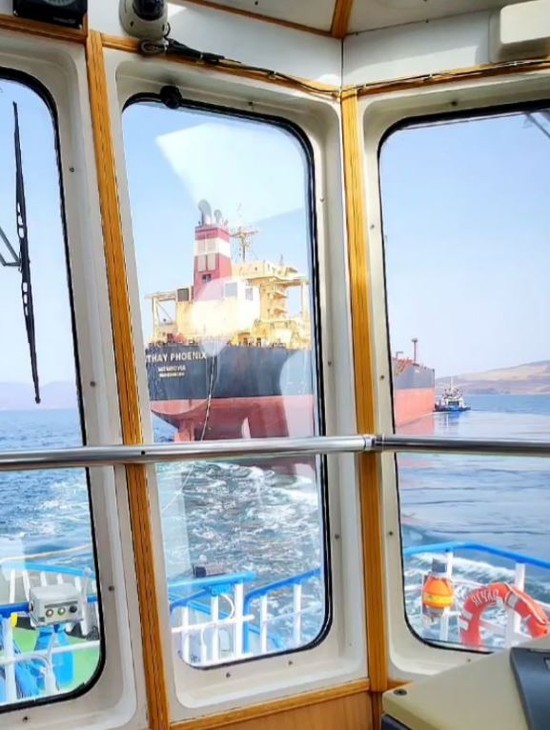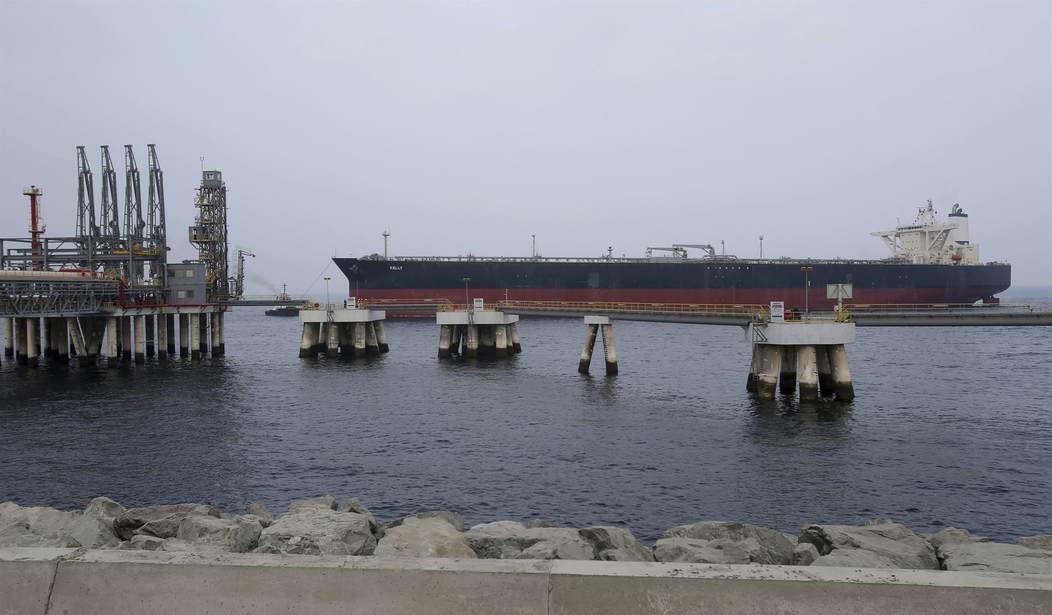The NY Times published the results of a pretty interesting investigation today. The paper looked into how Russia continues to sell oil to China despite sanctions by spoofing transponder signals and by paying an American company for necessary insurance.
The story opens by looking closely at one oil tanker called the Cathay Phoenix. All ships carry a transponder which shows their location and which is not supposed to be turned off. Back in February, the Phoenix’s transponder showed it was making some odd moves in the middle of the Sea of Japan. But a satellite image taken at the same time showed there was no ship there at all. Another satellite photo showed the Phoenix was actually 250 miles away in a Russian port being loaded up with oil. The ship had been spoofing its location to avoid detection.
For years, ships wanting to hide their whereabouts have resorted to turning off the transponders all large vessels use to signal their location. But the tankers tracked by The Times go beyond this, using cutting-edge spoofing technology to make it appear they’re in one location when they’re really somewhere else.
During at least 13 voyages, the three tankers pretended to be sailing west of Japan. In reality, they were at terminals in Russia and shipping oil to China.
The vessels are part of a so-called dark fleet, a loose term used to describe a hodgepodge array of ships that obscure their locations or identities to avoid oversight from governments and business partners. They have typically been involved in moving oil from Venezuela or Iran — two countries that have also been hit by international sanctions. The latest surge of dark fleet ships began after Russia invaded Ukraine and the West tried to limit Moscow’s oil revenue with sanctions…
The ships most likely sell their Russian oil to China above a price limit set by the sanctions. Since neither country recognizes the sanctions, the tankers themselves are not in violation by spoofing or carrying the oil.
But the tankers still have motive to spoof: to maintain their insurance coverage, without which they cannot operate in most major ports.
That insurance is being handled by an American company called the American Club. Under current US law, insurers are automatically free from any obligation to payout any claims made by a ship found to be evading US sanctions. It’s not clear why a US company would continue to take money from ships caught cheating sanctions.
After the Times contacted them about the Cathay Phoenix, the American Club’s website changed the expiration date of that ship’s insurance policy from next summer to June of this year. But they refused to comment on the reason for the change.
The advantage of this whole arrangement to Russia is obvious. They get to sell their oil for something much closer to market price of around $73 a barrel as opposed to the $60 a barrel mandated by sanctions.
In March, the Times tracked the same ship sailing from a port in China and heading east to the Sea of Japan. Once again the ship appeared to be floating off the shore of Japan for a time but a signal claiming it was taking on cargo in Japan actually registered at the Kosmino port in Russia. Better still, the Times found a group of tugboats moving the ship into port. One of the crew members on one of those tugs posted a photo on his Instagram account. Note the name on the ship.

Overall, a pretty impressive bit of reporting by the Times, proving beyond any doubt that this dark fleet of ships is helping Russia avoid sanctions and pay for it’s war in Ukraine.








Join the conversation as a VIP Member